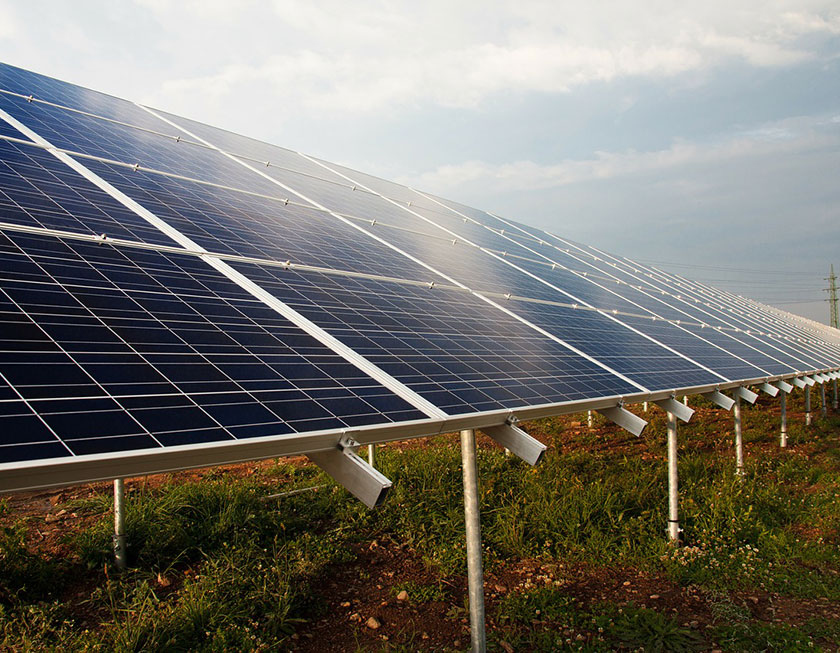3.4 Automated mechanisms to track the Sun’s path: Know the real-time position of the Sun to optimize the system efficiency

We have already discussed several types of concentrating solar power technologies. In this article, we are going to discuss a crucial technique used to improve the heat-to-electricity conversion efficiency in almost all the concentrating solar power technologies. It is solar tracking technique!
Why solar tracking is indispensable?
We have nothing to worry about the position of the Sun or its relative motion if it rises in a certain direction and stays at rest for several hours until it sets. Simply, if the Sun was a star at rest.
Just assume that our Sun is not in a relative motion with respect to the Earth. Now take a look at the diagram below.

A light ray coming from the Sun hits the surface and get reflected. As we can see it, the angle (θ) at which the light ray hits the surface (a flat reflector) is the same as the angle (θ) at which the light ray is get reflected by the surface (Law of reflection). The point onto which the reflector focus incoming rays depends on both the shape of the reflector and angle of incidence.
In concentrated solar power, the reflectors or mirrors must always be directed towards the Sun in order to harness as much as solar energy possible from solar radiation.
But…
As we know it, our planet is not something at rest. It is rotating about its own axis while revolving around the Sun. As a result, we observe a continuous change in the relative position of the Sun. Of cause, the Sun is not moving around the Earth. But that is how it looks like. A revolving Sun around the Earth!
It is an apparent motion!
So….
It is our Sun’s daily routine that it rises in the East and sets in the West (Due to the relative motion of the Sun)! As a result of the continuous change in the relative position of the Sun, the incident angle of the Sun’s rays is also continuously changing. This continuous change in the angle of incidence of Sun’s rays is what matters to CSP.
Since the relative position of the Sun is continuously changing with time the orientation of the reflectors or mirrors must be changed to follow the Sun’s path.
How solar tracking is achieved?
In order to optimize the energy yield from solar radiation, the orientation of solar concentrating systems is changed with the help of solar tracking devices. Solar tracking devices are devices which always monitor the real-time position of the Sun and keep the solar concentrating systems orientated towards the Sun accordingly.
Solar trackers consume some energy for their operation. However, they can significantly boost the overall system efficiency by about 10%- 100% depending on the geological conditions, and period of time whilst a typical tracking system consumes only about 2-3% of improved energy yield [1]. So, the solar tracking systems play a vital role in CSP systems by improving the energy yield per system and shrinking the payback time of a given CSP system.
How solar tracking systems work
Solar tracking systems are classified into two groups depending on their working principle. They are “active trackers “and “passive trackers”
Usually, active solar trackers employ sensors like LDRs (Light Dependent Resistors) to monitor the Sun’s path and use electric motors to orient the concentrating system accordingly.
Unlike, active tracking systems, passive tracking systems do not employ motors or electronic sensors. Instead, they employ a liquid or compressed gas to track the Sun’s path. These systems do not need electricity as they work with the heat of solar radiation. Upon exposure to sunlight, the gas or liquid expand which rotates the reflector or mirror until it is perpendicular to Sun’s rays.
Currently, two types of tracking systems are available: Dual axis and Single axis systems.
Single axis trackers have only one moving axis. Typically, they are aligned in North-South direction which enables the reflectors or mirrors to follow the Sun’s position as Sun rises in the east and sets in the west. But these systems are unaware of the seasonal variation in the Sun’s path and therefore, they cannot orientate the reflectors or mirrors from the north to the east.
Dual axis systems have two moving axes and thus they can orientate the reflectors or mirrors to follow the Sun very precisely. So, dual axis systems help harness as much as energy as possible.
Single axis vs. dual-axis tracking system
Single axis systems have fewer moving components than dual axis systems. So, single axis systems are less expensive, straightforward, and more reliable compared to their dual-axis counterpart. Further, single axis systems offer a greater life expectancy. However, dual axis systems offer a greater system efficiency than their single axis counterpart.
Which is the best tracking system?
One cannot just determine that the dual axis tracking system is the best. Both systems have specific advantages and disadvantages compared to the other. We should evaluate various factors such as the initial cost of the system, efficiency, location of the site, system efficiency, maintenance required, and system reliability before we decide which tracking system is the best fit for us.
References
[1] Mousazadeh, H., Keyhani, A., Javadi, A., Mobli, H., Abrinia, K., & Sharifi, A. (2009). A review of principle and sun-tracking methods for maximizing solar systems output. Renewable and sustainable energy reviews, 13 (8), 1800-1818.
